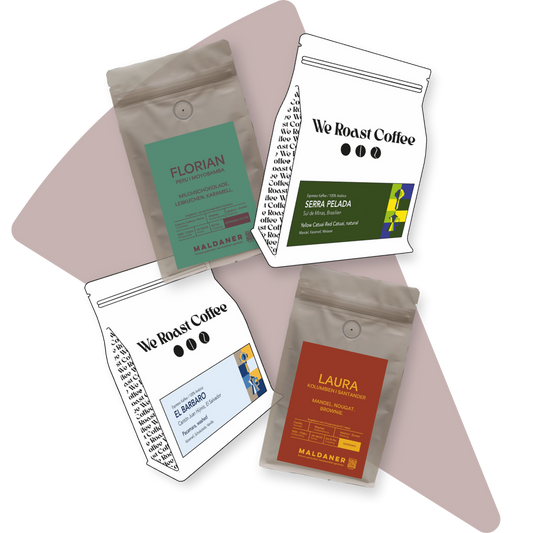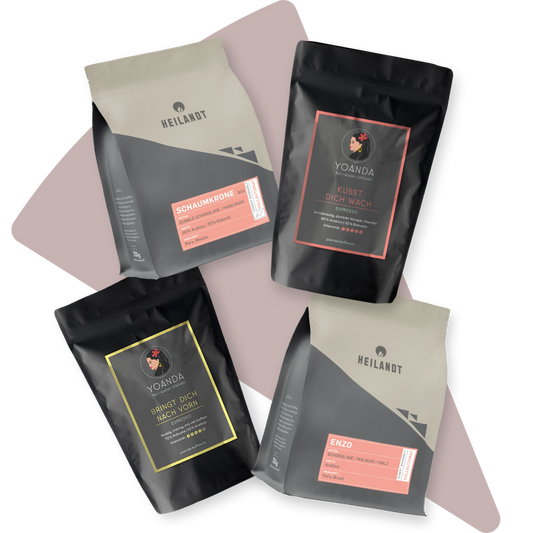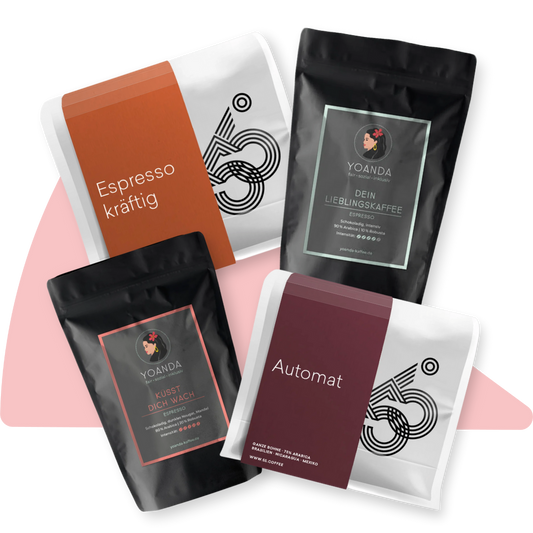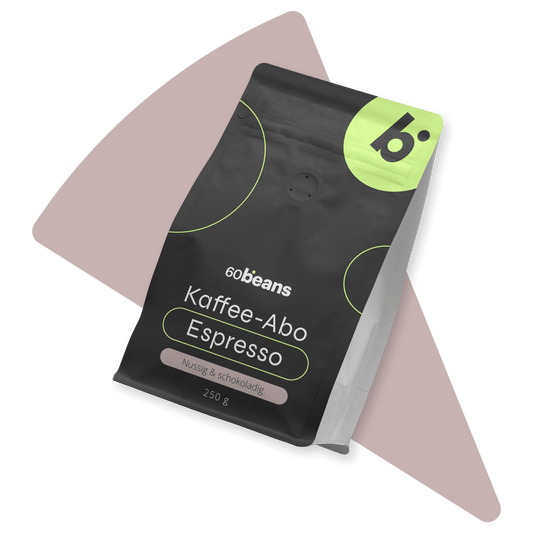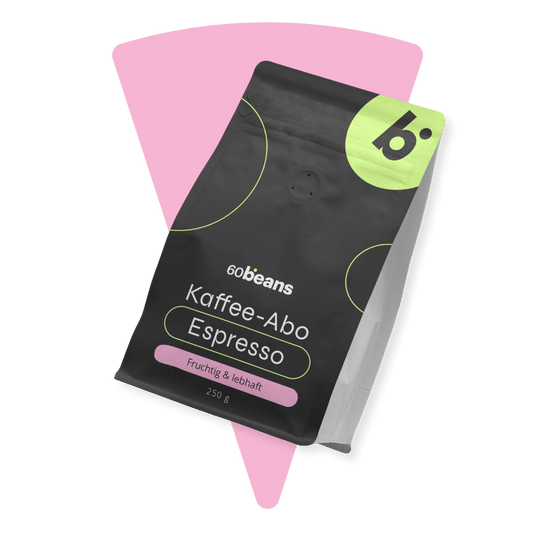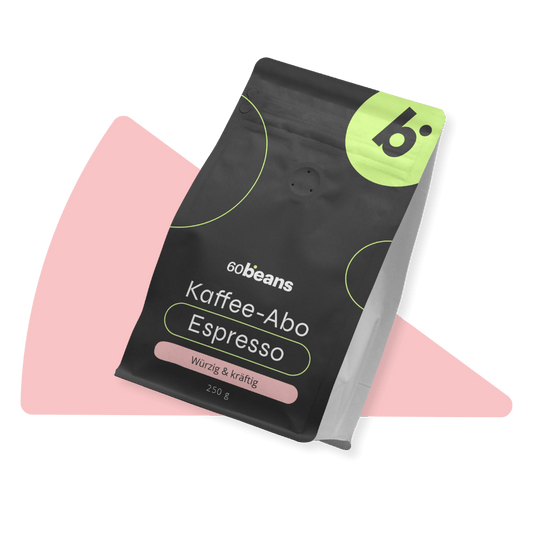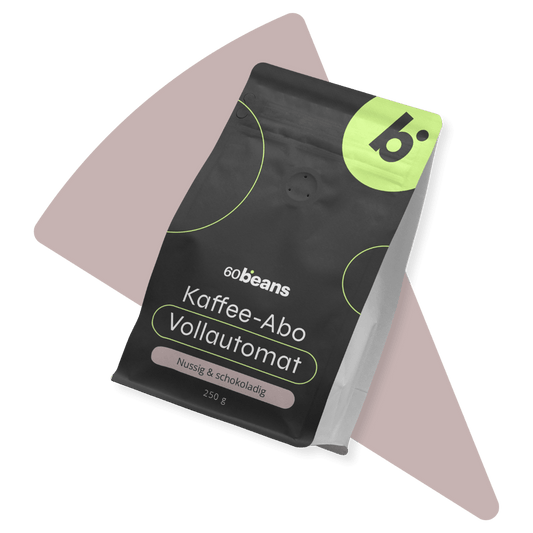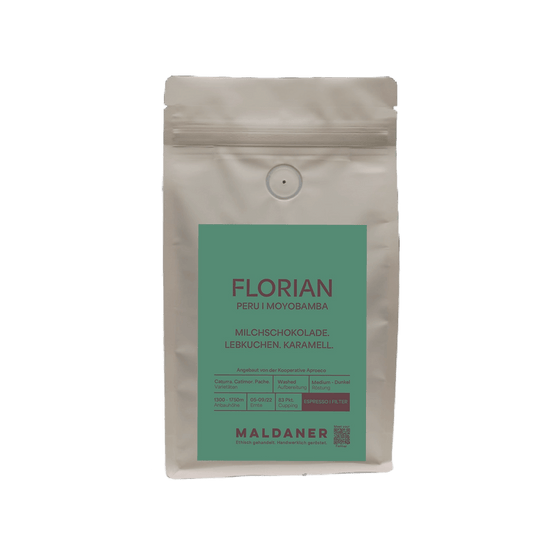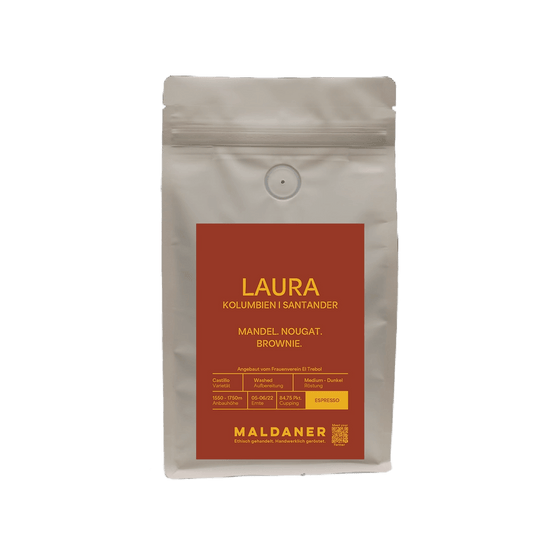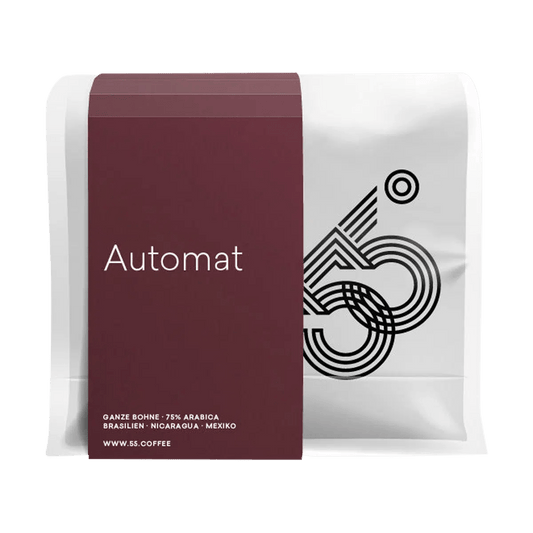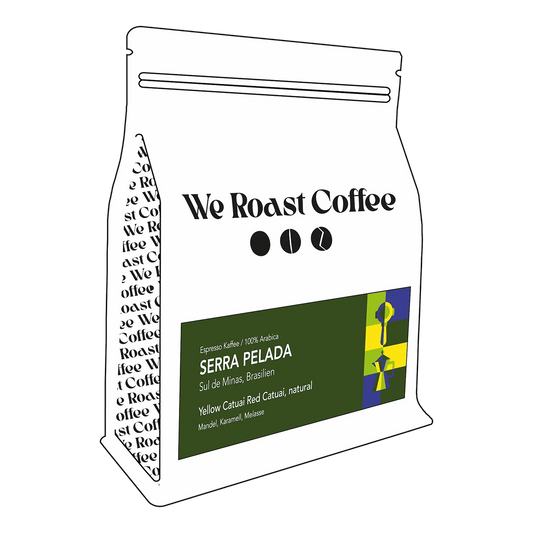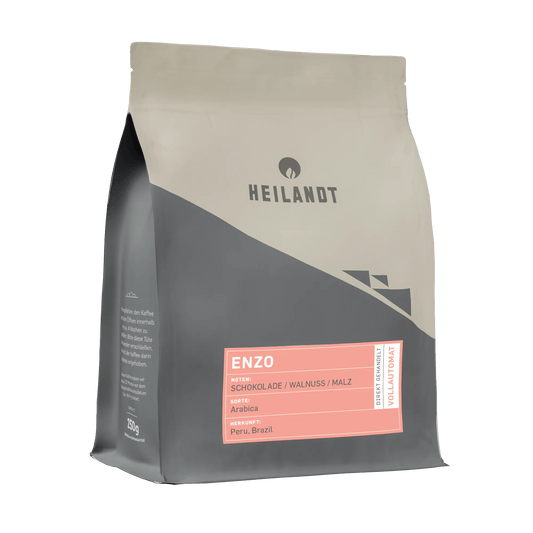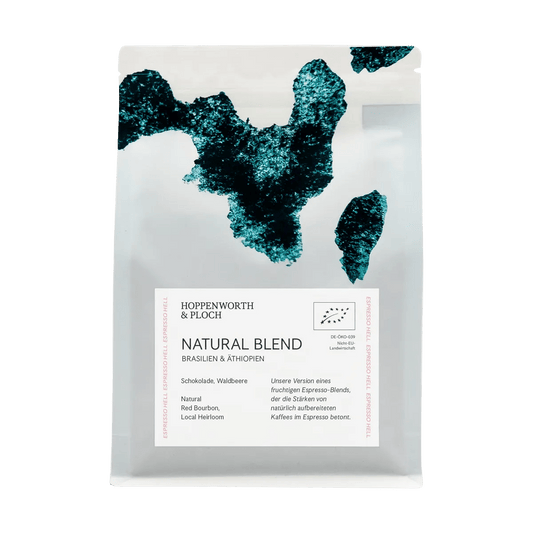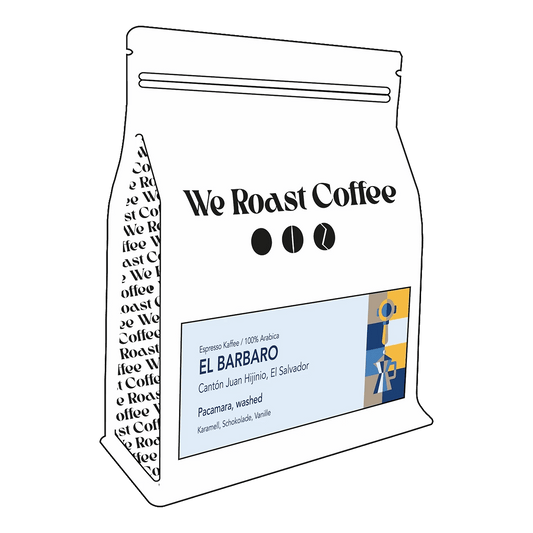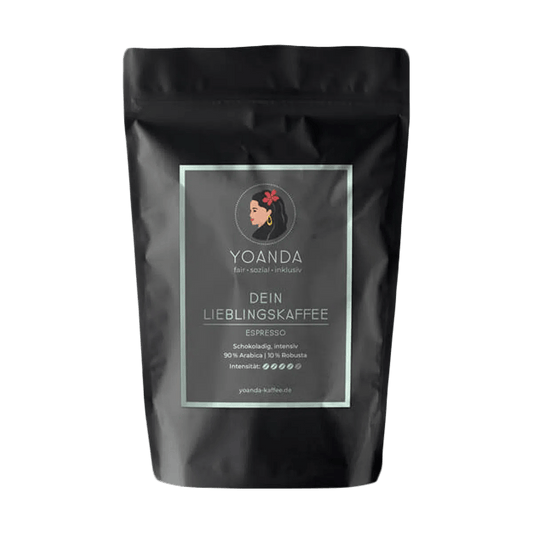-
Nutty & Chocolaty Espresso Tasting Set
(0)Brazil, Colombia, El Salvador, Peru- €42,90 / 4 x 250g
-
- €42,90 / 4 x 250g
- Unit price
- / per
- Translation missing: en.products.product.price.price_per_kg
- €42,90 / per kg
-
Nutty & Chocolaty Fully Automatic Tasting Set
(1)Brazil, Mexico, Peru, India- €34,90 / 4 x 250g
-
- €34,90 / 4 x 250g
- Unit price
- / per
- Translation missing: en.products.product.price.price_per_kg
- €34,90 / per kg
-
Spicy & Strong Tasting Set Espresso
(0)Brazil, Nicaragua, Mexico- €34,90 / 4 x 250g
-
- €34,90 / 4 x 250g
- Unit price
- / per
- Translation missing: en.products.product.price.price_per_kg
- €34,90 / per kg
-
Coffee subscription “Nutty & Chocolatey” Espresso
(0)- €42,90 / 4 x 250g
-
- €42,90 / 4 x 250g
- Unit price
- / per
- Translation missing: en.products.product.price.price_per_kg
- €42,90 / per kg
-
Coffee subscription “Fruity & lively” Espresso
(0)- €56,90 / 4 x 250g
-
- €56,90 / 4 x 250g
- Unit price
- / per
- Translation missing: en.products.product.price.price_per_kg
- €56,90 / per kg
-
Coffee subscription “Spicy & Strong” Espresso
(0)- €34,90 / 4 x 250g
-
- €34,90 / 4 x 250g
- Unit price
- / per
- Translation missing: en.products.product.price.price_per_kg
- €34,90 / per kg
-
Coffee subscription “Nutty & Chocolaty” fully automatic
(0)- €34,90 / 4 x 250g
-
- €34,90 / 4 x 250g
- Unit price
- / per
- Translation missing: en.products.product.price.price_per_kg
- €34,90 / per kg
-
(0)Peru
- €11,30 / 250g
-
- €11,30 / 250g
- Unit price
- / per
- Translation missing: en.products.product.price.price_per_kg
- €35,60 / per kg
-
(1)Colombia
- €10,90 / 250g
-
- €10,90 / 250g
- Unit price
- / per
- Translation missing: en.products.product.price.price_per_kg
- €35,60 / per kg
-
(0)Brazil, Nicaragua, Mexico
- €9,50 / 250 g
-
- €9,50 / 250 g
- Unit price
- / per
- Translation missing: en.products.product.price.price_per_kg
- €38,00 / per kg
-
(0)Brazil
- €10,50 / 250g
-
- €10,50 / 250g
- Unit price
- / per
- Translation missing: en.products.product.price.price_per_kg
- €31,50 / per kg
-
Heilandt Enzo Fully Automatic Espresso
(0)Peru, Mexico- €8,80 / 250 g
-
- €8,80 / 250 g
- Unit price
- / per
- Translation missing: en.products.product.price.price_per_kg
- €35,20 / per kg
-
H&P Organic Natural Blend Espresso
(2)Brazil, Ethiopia- €11,90 / 250 g
-
- €11,90 / 250 g
- Unit price
- / per
- Translation missing: en.products.product.price.price_per_kg
- €47,60 / per kg
-
(0)El Salvador
- €11,00 / 250g
-
- €11,00 / 250g
- Unit price
- / per
- Translation missing: en.products.product.price.price_per_kg
- €44,00 / per kg
-
Yoanda Dein Lieblingskaffee Espresso
(0)Ethiopia, Brazil, India- €7,90 / 250g
-
- €7,90 / 250g
- Unit price
- / per
- Translation missing: en.products.product.price.price_per_kg
- €31,60 / per kg
-
Not found what you are looking for?
Get a recommendation
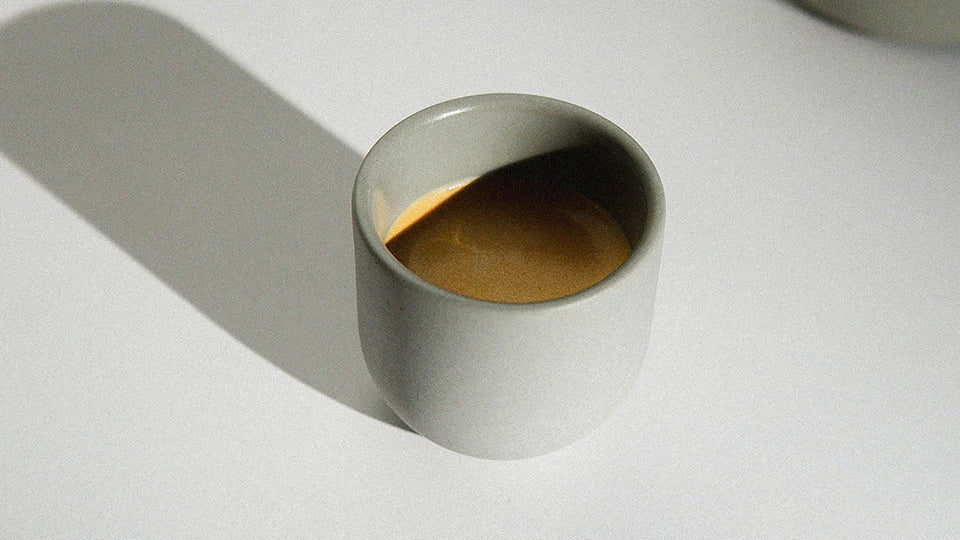
The perfect espresso starts with buying coffee.
Espresso – pretty much the best drink when it comes to switching off for a moment and enjoying life. However, in order to conjure up an excellent espresso, you have to keep a few things in mind. The most important? Buy the right coffee. With us you will find exactly that – really good coffee. For us, really good doesn't just mean that your espresso has to taste fantastic. At 60beans, we particularly value the fair treatment and payment of farmers, because without them nothing works. That's why we only work with roasters who care about these values just as much as we do. All this so that you can enjoy only the finest espresso - every day.
From the coffee beans to the finished espresso.
Sure, these days we all know what an espresso looks like, but what is actually important when preparing it and where does the caffè, as the shot from the portafilter is still called in Italy today, actually originate?
The history of espresso
It all started in 1884 when a gentleman named Angelo Moriondo thought about how to conjure up a cup of coffee as quickly as possible. In order to extract the flavors from ground coffee more quickly, you need finer coffee grounds - and this is where the problem begins. If coffee is ground very finely, gravity alone is no longer enough to push water through the powder. Another method was needed. Enter, steam. In 1884, Moriondo patented the first machine that could force water through the ground coffee using steam pressure. However, since this method was not entirely safe at the time and the pressure was not sufficient to produce the espresso we know today, the search continued. Achille Gaggia finally made his breakthrough. He patented the first hand lever machine. A form of espresso machine that is still produced and used today to make fantastic espresso.
What is important when it comes to espresso?
Processing ground coffee beans into an espresso is a task in itself and requires some time and a lot of love. Do you want to immerse yourself in the world of espresso? Then here are the absolute basics for you. You need fine ground coffee, which you place as evenly as possible in a metal sieve. This sieve is peppered with many small holes - so small that if possible no larger particles end up in your cup. The powder is now tamped, So pressed together with a so-called tamper. Then you clamp the portafilter into the espresso machine , which then presses hot water at around 93° degrees through your ground coffee beans at high pressure. Zack, your espresso is ready. Of course it's not quite that simple. A fantastic espresso is all about the right recipe. The amount and grind of the coffee you use, the time in which your espresso brews, how much liquid ends up in your cup. All of these things have a significant impact on how your espresso tastes. By the way, that was just the beginning. Want to see how to make an espresso? Then we have a video ready for you on our blog.
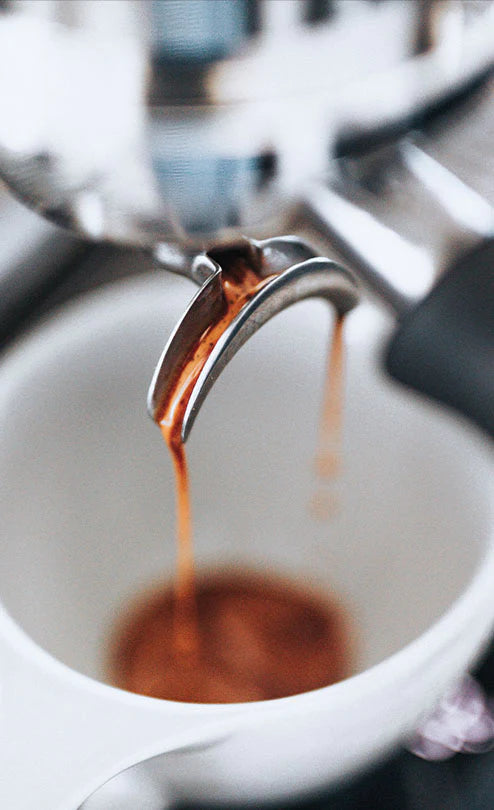
Your espresso – buy beans for every taste.
If you're like us, you've probably had a few espressos in your life. Many years ago, people here often knew what to expect in terms of taste. Lots of roasted aromas, bitter chocolate, a silky, heavy mouthfeel - and if everything went right, a rich crema. Today, espresso is more diverse than ever and the “classic” flavors have been joined by floral aromas, berries and fruits. For your espresso, you should buy exactly the beans that suit you.
The right bean and its aromas
So that you can find your new favorite espresso at 60beans, we have divided our selection into five flavor profiles.
Of course, you can also sort our coffees by country of origin, bean type, roastery and more. Depending on where your espresso was grown, what type it is and how it was ultimately prepared and roasted determines what you can get out of it. A coffee from Ethiopia can have a dominant taste of candied fruits, bergamot and citrus fruits. Cuban coffee, on the other hand, is often less tangy and has more body. Of course, you shouldn't generalize, because coffee is simply too complex for that - and that's exactly what we love about it.
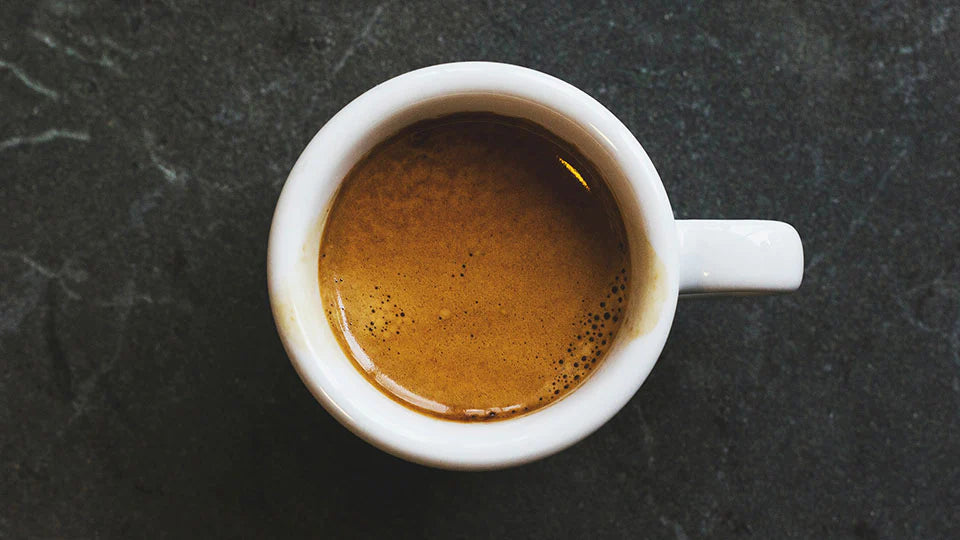
The crema and what makes it special
For many people, the thick crema on a cup of espresso is a sign of quality, but why and where does it come from? Imagine the head of foam on a beer. Espresso is relatively similar to a cool blonde. Simply put: CO₂, which was previously dissolved in the drink, rises and forms the characteristic bubbles on the surface. In the case of an espresso, these are of course much finer and are formed by other ingredients that surround the CO₂. But why is Crema so popular with many coffee drinkers? Back in Italy, the crema was an indication that the coffee was made with an espresso machine and not with other methods such as the Bialetti. Nowadays, the crema itself no longer says much about the actual quality of a good espresso, because even an espresso without crema can taste incredibly good. Lighter roasted beans, for example, produce less crema because less CO₂ is formed in the beans due to the less intensive roasting. However, only one person decides whether there should be a layer of crema on the end of your espresso or not - you. Curious? With our taste finder you can buy exactly the espresso that suits you. Simply answer a few short questions and receive your recommendation directly in your browser without registering.
FAQ Buying the right espresso
What is the difference between espresso and regular coffee?
Espresso is a concentrated form of coffee made under high pressure. In contrast to regular coffee, espresso is made in an espresso machine with very finely ground coffee. This creates an intense, aromatic and strong taste.
Where can I buy espresso?
You can buy your espresso at local roasters or online. Online shops like 60beans.com offer you a wide selection of high-quality, fair trade coffees.
What factors should I consider when buying espresso?
There are several factors to consider when purchasing espresso. This includes the roasting, the origin of the beans, the preparation method and much more. It is also important to consider your own tastes and preferred preparation method.
Which grind setting should I use for espresso?
The grinding level is crucial for preparing espresso. A fine grind is recommended for most espresso machines. However, the exact setting may vary depending on the machine, coffee and personal preference. It is advisable to experiment with different grind settings to achieve the best taste.
How long does espresso stay fresh?
Espresso beans should be ground immediately before preparation. Whole beans retain their flavor longer than ground espresso. If stored well, your beans will last for several months. You will achieve the best results between 2 and 6 weeks after roasting. After opening the package, the espresso should be stored in an airtight container in a cool, dry place.
Is there caffeine-free espresso?
Yes, there is caffeine-free espresso. Decaffeination involves treating the beans before roasting to remove the caffeine. Good decaf espresso tastes just as good as caffeinated espresso. In our shop you will find a wide selection of decaffeinated beans.

